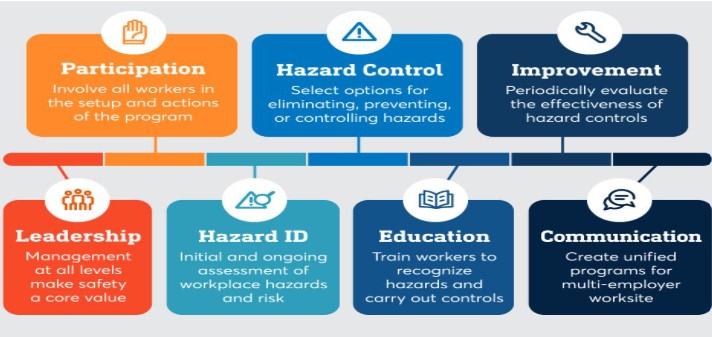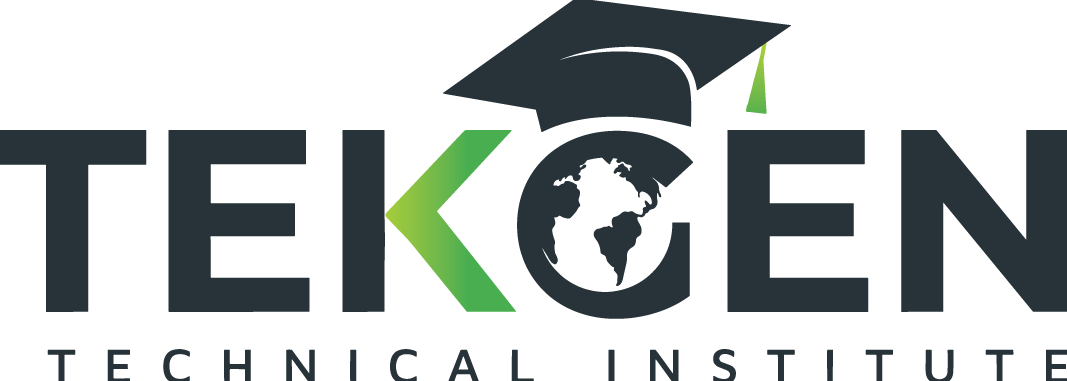Launching an ISO Aligned HSE Management System
Integrating ISO 45001 & ISO 14001 for Comprehensive Safety and Environmental Management
An HSE management system that integrates ISO 45001 (occupational safety) and ISO 14001 (environmental management) offers a dual advantage: ensuring both worker protection and sustainability. This integrated approach helps organizations operate in a safe and responsible manner while ensuring compliance with international regulations. Combining safety and environmental standards allows companies to improve their overall performance, reducing risks while contributing positively to the environment.
By adopting this integrated framework, organizations can create a robust management system that focuses on continuous improvement, legal compliance, and the protection of both people and the planet.
Steps to Launch an ISO-Aligned HSE System
Implementing an ISO 45001 and ISO 14001 aligned HSE system involves several key steps to ensure smooth integration and compliance. Below is a step-by-step guide to launching this comprehensive management system:
1. Initial Risk Assessment & Safety Audit
Before integrating ISO 45001 and ISO 14001, organizations must conduct a thorough risk assessment and safety audit to understand the current risk landscape and compliance status. This includes:
Identifying existing hazards in the workplace (e.g., physical, chemical, biological risks).
Assessing the environmental impact of operations (e.g., waste management, emissions).
Reviewing compliance with current regulations and industry standards.
Evaluating the effectiveness of existing safety protocols and environmental policies.
Outcome: The audit provides a baseline for setting goals, identifying areas for improvement, and aligning the management system with ISO standards.
2. Define Policies and Objectives
Once the audit and assessment are completed, the next step is to define integrated HSE policies that reflect both safety and environmental goals. This includes:
Developing clear HSE policies that emphasize worker safety, health, and environmental protection.
Setting specific objectives that support both ISO 45001 (focused on occupational health and safety) and ISO 14001 (focused on environmental performance).
Example:
ISO 45001 objectives may include reducing workplace accidents, providing adequate training, and ensuring the effective use of PPE.
ISO 14001 objectives could focus on reducing waste, improving resource efficiency, and lowering emissions.
3. Provide Practical Training
A critical part of implementing an integrated HSE system is ensuring that employees are properly trained. This includes:
Personal Protective Equipment (PPE) use: Workers should understand the importance of using appropriate PPE for each task and be familiar with proper usage.
Hazard recognition: Employees must be trained to identify workplace hazards (e.g., chemical spills, noise risks) and understand the risk control measures.
Reporting procedures: Workers need to know how to report safety hazards, environmental concerns, and near-miss incidents promptly.
Emergency response: Workers should be trained in emergency procedures, including evacuation protocols, fire safety, and chemical spill containment.
Outcome: Practical, hands-on training ensures workers can apply safety protocols and environmental best practices effectively.
4. Set Up Indicators
Key performance indicators (KPIs) help organizations monitor the effectiveness of their HSE system. These indicators are divided into two categories:
Leading Indicators:
These indicators focus on actions that are preventive and can be used to predict future performance. For example:Number of inspections completed.
Safety observations made by employees.
Behavior-based safety (BBS) reports.
Lagging Indicators:
These indicators focus on past performance and are used to track the outcomes of the safety and environmental efforts. For example:Total Recordable Injury Rate (TRIR).
Frequency of workplace injuries.
Lost-time days due to injury or accidents.
Outcome: Using both leading and lagging indicators helps organizations track progress toward safety and environmental goals and adjust their strategies accordingly.
5. Management Review & Continuous Improvement
An essential component of ISO 45001 and ISO 14001 is the commitment to continuous improvement. This involves:
Conducting regular management reviews to evaluate the performance of the HSE system.
Identifying opportunities for improvement and setting new objectives as the organization evolves.
Implementing corrective and preventive actions based on audit findings, employee feedback, and performance metrics.
Adjusting policies, training programs, and safety procedures to stay compliant with ISO standards and evolving regulations.
Outcome: A cyclical review process ensures the HSE system stays relevant and continues to improve, helping organizations stay ahead of risks and maintain a safe, sustainable workplace.
Why This Approach Works
Integrating ISO 45001 and ISO 14001 provides multiple benefits that directly impact the organization’s operations and overall performance:
1. Reduced Workplace Incidents
A combined safety and environmental management approach creates a safer environment by reducing workplace injuries, accidents, and environmental hazards.
Safer environments mean fewer disruptions and less downtime, leading to smoother operations.
2. Improved Legal Compliance
ISO-certified systems help businesses stay compliant with national safety regulations and environmental laws.
Meeting OSHA and other regulatory standards reduces the risk of legal penalties and fines for non-compliance.
3. Stronger Client Confidence
ISO certification signals to clients, stakeholders, and business partners that the organization is committed to maintaining high standards of health, safety, and environmental responsibility.
This builds trust and can lead to more business opportunities and stronger client relationships.
4. Operational Efficiency
By integrating HSE standards into daily operations, organizations streamline their processes, reduce waste, and improve resource efficiency.
Fewer unplanned delays and less downtime mean that the company operates more efficiently and at a lower cost.
Conclusion
Integrating ISO 45001 and ISO 14001 into a comprehensive HSE management system provides a dual benefit for organizations: worker protection and environmental sustainability. By following the steps outlined above—such as conducting risk assessments, defining policies, providing training, and setting performance indicators—companies can build a strong safety and environmental management system that ensures compliance and promotes continuous improvement.
Investing in an integrated HSE system not only reduces risks and enhances safety but also helps improve operational efficiency, legal compliance, and client trust. Ultimately, a well-implemented HSE system creates a safer, healthier, and more productive workplace for everyone.


